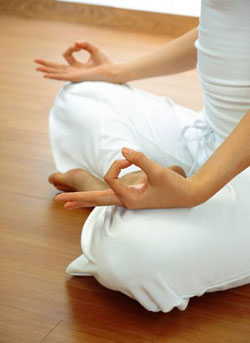
Healthy lifestyle is the best treatment for high blood pressure
No drug can ever help you to win a battle against high blood pressure for good. The best they can do is to give a temporarily relief. However, by changing your lifestyle habits you can keep your blood pressure under control.
There are 3 major aspects of your life that affect blood pressure
- Exercise
- Diet
- Stress management
Most important you should do some exercise every day.
Another essential thing you will have to evaluate is your diet. Do you like souses, pickles and pre-cooked meals? Than you will have to cut it down, because all of the above are extremely high in sodium and sodium affects blood pressure very badly. Add more veggies and fruits to your diet, remove your salt shaker from the table and you will feel much better as your blood pressure lowers.
Every time you stress out, your blood pressure jumps up. And if stress is a permanent part of your life it can constantly keep your readings high. Don’t ignore stress; there are many effective ways to deal with it. For example, you can enroll in a stress relief class or take a yoga or Tai Chi class. Try to find time to do things that you enjoy.
High blood pressure medication
When it comes to high blood pressure drugs, you should never get one without consulting a doctor. If a particular medicine works well for your friend it doesn’t mean it will suit you. Most high blood pressure drugs are prescription drugs, so the only way to get them is to visit your physician first and ask for prescription.
Medication used to control high blood pressure includes:
- ACE inhibitors
- Calcium channel blockers
- Beta-blockers
- Angiotensin-receptor blockers (ARBs)
- Alpha-blockers
- Diuretics
In the past a lot of high blood pressure medications were unsafe and had side effects. Luckily they improved in recent years, so modern drugs that help to lower your blood pressure are more effective and safe.
Alternative high blood pressure treatments
If you don’t trust conventional drugs and prefer alternative medicine, there are several treatments that can help to lower blood pressure.
Natural herbs for high blood pressure are very popular. Most effective are Hawthorn and Ginkgo Biloba. Several studies have shown that garlic also helps with hypertension control. Garlic thins the blood (reduces its ability to clot).
Garlic supplements work just as well as fresh garlic.
Among the alternative therapies, most common are acupuncture and magnetic high blood pressure therapy.
Acupuncture relaxes your body and releases some of the strain on the heart. There is no hard scientific proof that acupunctures works, but many people who tried it, swear that it helped to decrease their blood pressure.
Treatment with magnets can also help. Copper and iron bracelets reduce the effects of blood pressure, but scientists don’t know how and why. However, this treatment is painless and safe, so it is worth the try.
There are many ways to treat high blood pressure. You should never ignore it, because this condition doesn’t just go away unless you do something to control it.







